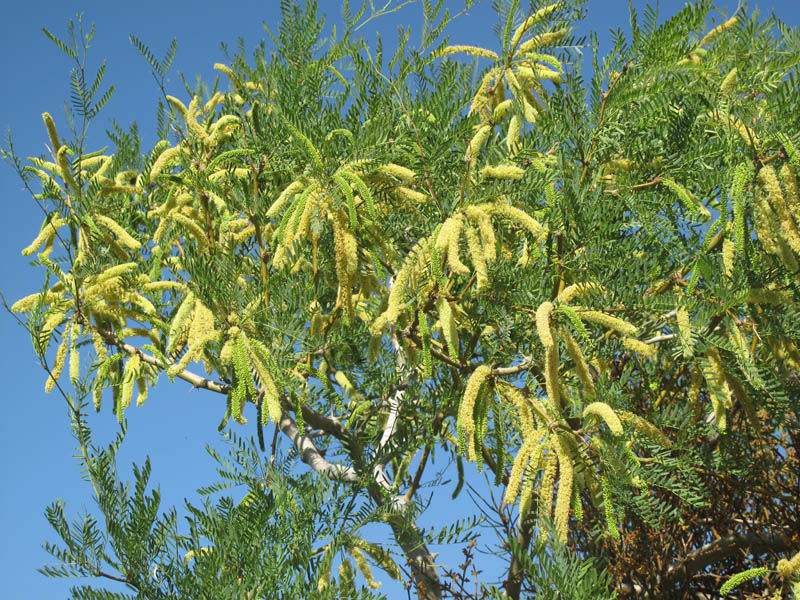Honey Mesquite
Prosopis glandulosa
Click here to download a PDF of this plant information page (for printing).

Sun Exposure: Full Sun
Season of Interest: All Seasons
Bloom Time: Spring
Bloom Color: Yellow
Height: 30 ft.
Spread: 30 to 40 ft.
Spacing: 40 ft.
Water Needs: Below Average
Maintenance: Prune for shape
Soil Type: Clay, Loam, Sandy, Rocky
Soil pH: Acidic, Neutral, Alkaline
Soil Drainage: Well drained
Pests: None (Deer resistant)
Diseases: None
Wildlife: Bees, Butterflies, Birds

Description:
Honey mesquite trees are native to the desert southwest but grows unprotected in plant hardiness zones 7 through 11. Like most desert trees, they are drought resistant and a picturesque for your backyard or garden. Honey mesquite trees add summer shade and winter drama to your landscape. With twisted trunks, formidable thorns, and yellow spring flowers, honey mesquites are unique and interesting. These trees grow relatively fast to about 30 feet tall and 40 feet wide. The roots delve down even deeper which is what helps to make them so drought resistant. Ornamental features include yellow spring flowers and unusual seed pods. The pods are fairly long and tubular, resembling wax beans. They ripen in late summer. Mesquite bark is rough, scaly, and reddish brown. The tree is armed with long thorns, which makes it a good candidate for a defensive hedge. Also, mesquite wood is the best wood for smoking dark meats that can stand up to the strong flavor it imparts (brisket, pork butt, wild game meat, duck, lamb). For more information see:
extension.arizona.edu/sites/extension.arizona.edu/files/pubs/az1429.pdf
Care and Growing Tips:
When growing honey mesquite trees, you should know that they are highly tolerant of heat and drought once established. This tree should be planted in full sun but is not picky about soil as long as it is well draining. Only water sparing for a few months after transplanting, then do not water again. If it receives too much water, it will grow very fast, and the wood will be weak. You'll also need to do foundational pruning to establish the desired shape when the tree is young. Once the tree has reached sufficient size, prune dead and weakened branches (or harvest wood for smoking meats) in the fall.